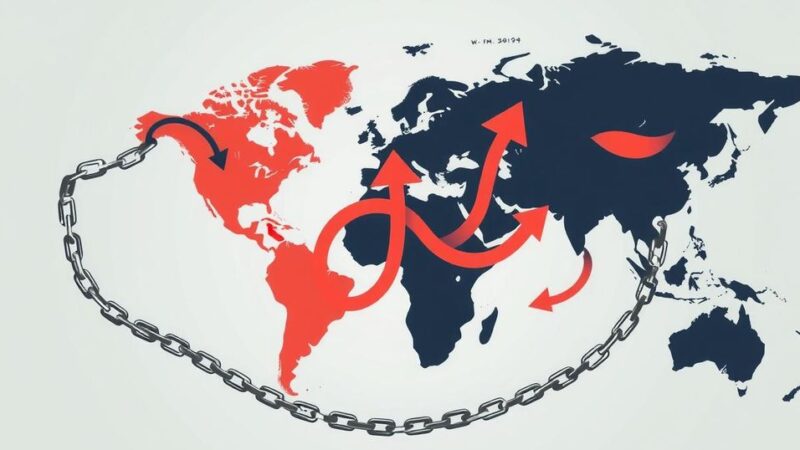GiveDirectly is launching a disaster aid program providing $1,000 relief payments to nearly 1,000 households impacted by Hurricanes Helene and Milton in North Carolina and Florida. Utilizing advanced AI technology, the program identifies affected regions and facilitates application through a smartphone app, aiming to streamline aid delivery. While the initiative promotes individual empowerment, challenges remain regarding accessibility and funding. The program aspires to influence broader disaster relief paradigms in the U.S.
Nearly 1,000 households in North Carolina and Florida affected by Hurricanes Helene and Milton are set to receive $1,000 relief payments this week through a unique disaster aid initiative run by the nonprofit organization GiveDirectly. This initiative leverages an innovative artificial intelligence tool developed by Google to identify severely impacted regions characterized by both high poverty rates and significant storm damage. As part of this program, GiveDirectly has made it possible for eligible individuals to apply through a smartphone application typically utilized for managing government assistance programs such as SNAP. The relief effort aims to simplify the aid distribution process, offering direct cash payments to families and eliminating the burdensome application process often associated with disaster relief. As Laura Keen, a senior program manager at GiveDirectly, stated, the objective is to aid individuals in identifying their immediate needs in a manner that is streamlined and dignified. Traditionally, disaster response has involved the delivery of in-kind supplies such as clothing and food, which, while valuable, may not address personal necessities such as childcare, hotel accommodations, or transportation challenges faced by affected families. According to Keen, “There is an elegance to cash that allows individuals in these types of circumstances to resolve their unique needs, which are sure to be very different from the needs of their neighbors.” GiveDirectly has previously engaged in direct cash assistance for disaster relief and has implemented this approach in the United States for previous disasters, including Hurricanes Harvey and Maria in 2017. Their current model, which employs remote enrollment through the Propel app, significantly reduces the time frame for delivering funds compared to earlier methods that required in-person enrollment. Despite these advancements, the model does face certain limitations. Not all low-income households may be reached, particularly if they do not reside in areas with heavy destruction or lack access to technology. Keen acknowledged these challenges, mentioning potential strategies such as combining remote methods with in-person outreach for comprehensive support. The broader push for direct cash assistance is becoming increasingly highlighted in national disaster relief frameworks as FEMA adjusts its own financial assistance programs to increase payments and streamline processes, although many state-level applications still remain. “I think that we have to open up our imaginations that maybe there are other ways to quickly identify need and quickly identify eligibility,” suggested Chris Smith, former director of FEMA’s Individual Assistance program. Research supports the effectiveness of cash assistance, showing recipients typically allocate funds towards crucial living expenses such as food and transportation. Analysis indicates that sustained assistance could yield even greater benefits, as evidenced by successful programs following significant disasters in recent years. Ultimately, GiveDirectly aspires for its model to inspire a transformation in how disaster relief funds are distributed and utilized across the country, promoting more direct and effective financial assistance strategies in responding to future disasters.
The article discusses GiveDirectly’s initiative to provide direct cash payments to families affected by Hurricanes Helene and Milton in the U.S. This program stands out due to its use of artificial intelligence to efficiently identify eligible households in impacted areas, making it distinct from traditional disaster aid efforts that primarily involve in-kind donations. The organization aims to empower individuals by allowing them to decide how to utilize financial relief based on their specific needs. The discussion also touches on limitations of this model, particularly regarding accessibility for all affected families. Additionally, the role of technology in improving disaster response and the potential for adopting innovative payment strategies in governmental programs are highlighted.
In conclusion, GiveDirectly’s innovative approach to disaster relief through direct cash payments exemplifies a significant shift towards efficient and personalized aid distribution. By utilizing technology and data-driven methods to identify and assist impacted households rapidly, the organization aims to address individual needs more effectively than traditional relief methods. While challenges remain in ensuring equitable access to assistance, the initiative serves as a promising model for future disaster relief efforts, emphasizing the importance of flexibility and direct support in crisis response.
Original Source: spectrumlocalnews.com







